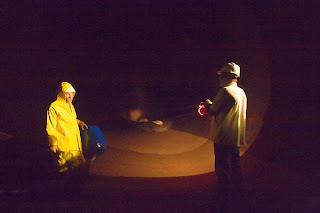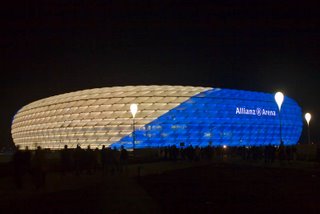In front of me a group of Paraguayans eat, drink and wholeheartedly sing (I’m assuming that they are Paraguayans because Paraguay is right next door, but it’s impossible to tell by the way they dress since their outfit is all but typical, if you know what I mean). Behind their table, a musical group – actually a duo of a keyboarder and a singer – plays a medley with instrumental versions of all-time successes including “Only You”, “Solamente Una Vez” and “The Girl From Ipanema”... One of the gentlemen at that table makes a move like he’s getting up to sing along with the musicians. His friends tell him to go for it, but he gives up. I still haven’t decided whether I found it good or bad that he didn’t have the guts to go ahead.
It’s 11 PM and I’m having dinner at the hotel’s restaurant after an intense shooting day at the de Itaipu Hydroelectric Plant. This is the eighth day of assignment, from a total of 25. I’m just done transferring the photos to my laptop, editing the images, backing them up and transcribing my day’s field notes – a big day as usual, I must say.
Today I photographed a little bit of everything: animals such as caimans and a jaguar, plant nurseries, fat and thin people, rivers, landscapes. I also photographed the job of some folks who rescue fish that get trapped inside the plant’s structures.
Periodically, one of the 20 turbines from Itaipu are deactivated for maintenance, and that’s when a team of specialists come to capture and save fish that might have been stranded somewhere inside. This wasn’t in my original shoot list, but since I figured that it could render good pictures, here I go tucking myself through the ducts of the world’s largest hydroelectric plant.
Our walk starts at a long, narrow, humid, hot and irregularly lit concrete corridor that for some reason reminded me of Dachau in Germany (fortunately the similarities are solely structural). I’ve never been claustrophobic, but for a moment I felt something strange. And this was only the beginning...
From the first corridor we took an elevator and quickly went up some 25 meters until a second alleyway even narrower, which led to a yellow metal spiral staircase, which led to a tiny little room full of levers, controls and gauges, which led to a sort of hatchway, that finally led to a small ladder similar to those found in swimming pools, by which we descended in total darkness. Voila, there I was inside the duct. In front of me, no more Paraguayans eating and drinking and singing, but a steel wall full of huge rivets that holds all the backwater from Itaipu’s Lake – or almost all the water, since part of it is dripping down the wall and from the ceiling, leaving the floor extremely slippery. Five meters behind me is a 40-meter deep abyss that ends up at the turbin. I bravely refrain from the temptation of asking how many meters we are under the water surface – and what would happen if someone hypothetically forgot that we were inside and opened the floodgates. This time – as opposed to my doubts whether the Paraguayan folk should or should not sing – I’m sure that the best to do was to remain quiet and just listen to the instructions.
The technician in charge of the fish rescue operation gives me strict orders not to get away from his side, under absolutely no circumstance. I guess that he got kind of scared with me this morning, when I walked a bit too close to a mommy caiman with its babies. To calm him down I tell him not to worry, since I really don’t fear animals that much, but am very respectful to things such as dark ducts and turbines and black abysses.
And there he goes underneath the big wall, fishing net, flashlight and bucket in his hands, trying to save some stranded fish. Search here, search there, but nothing – fortunately all of the area’s fishes seem to be safe and sound. I feel glad about them, but kind of frustrated for not being able to get a good picture of the rescue operation.
No problem, tomorrow we have another chance, they are going to take me to a “neater” spot (inside the turbine!) where the chances of rescuing fish trapped in the duct are higher...
.
.
.
.
.















